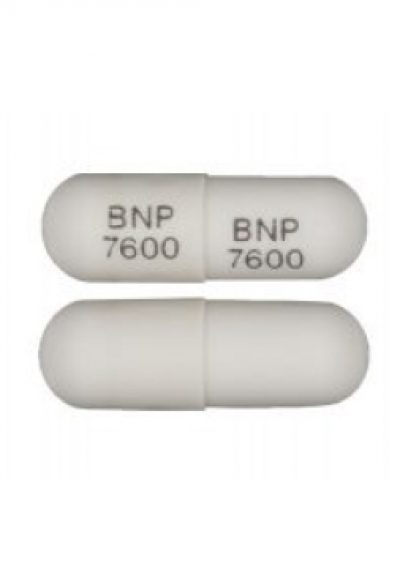Elmiron
Elmiron, also known as pentosan polysulfate sodium, is a prescription drug approved to treat pain and discomfort caused by interstitial cystitis. It’s also a weak blood thinner. Common side effects include hair loss, diarrhea and nausea. Rare but serious side effects include bleeding and vision problems.

The U.S. Food and Drug Administration approved Elmiron in 1996. Janssen Pharmaceuticals, a subsidiary of Johnson & Johnson, manufactures the drug.
There’s currently no generic version of the medication, and it’s the only oral drug approved to treat bladder pain and discomfort associated with interstitial cystitis (IC). IC is a chronic bladder condition that affects between 3 and 8 million women and 1 to 4 million men, according to the National Institute of Diabetes and Digestive and Kidney Diseases. Elmiron is recommended as a second-option therapy after nondrug-based interventions such as patient education and lifestyle changes.
Most people who use Elmiron are women. It’s estimated that hundreds of thousands of people have used the drug, according to Drs. Adam M. Hanif and Nieraj Jain in their July 2019 study published in Review of Ophthalmology.
What Is the Drug Used For?
Elmiron treats discomfort and pain caused by IC, but it’s not a pain medication. It also has mild anticoagulant effects but it’s not indicated for use as a blood thinner such as warfarin or other anticoagulants. Elmiron isn’t a cure for IC.
In one blinded, randomized, placebo-controlled study, 28 out of 74 patients who received Elmiron reported 50% improvement in bladder pain after three months.
This medication’s active ingredient is called pentosan polysulfate sodium. Inactive ingredients in each white, opaque, hard gelatin capsule include pharmaceutical glaze (modified) in SD-45, synthetic black iron oxide, FD&C Blue No. 2 aluminum lake, FD&C Red No. 40 aluminum lake, FD&C Blue No. 1 aluminum lake, D&C Yellow No. 10 aluminum lake, n-butyl alcohol, propylene glycol, SDA-3A alcohol and titanium dioxide.
How Does Elmiron Work?
Janssen doesn’t know how Elmiron works to treat IC. Scientists think it works by sticking to the bladder wall membrane. The drug acts like a shield, making it more difficult for irritants from urine to reach bladder wall cells.
Dosage
The recommended dose of Elmiron is one 100 mg capsule three times a day by mouth for a total of 300 mg. Take this medication with water when your stomach is empty at least one hour before meals or two hours after meals.
After three months, people taking Elmiron should visit their medical providers to see if there is improvement in symptoms. If there is no improvement, patients may continue taking the drug for another three months. Treatment beyond six months hasn’t been evaluated for safety or effectiveness in clinical trials.
Side Effects
Researchers studied Elmiron’s safety in an unblinded clinical trial of 2,499 IC patients. The most common side effects occurred in 1% to 4% of people.
Elmiron is a weak anticoagulant about 1/15th the strength of heparin. In a study of 128 people who took 300 mg of Elmiron each day, about eight patients (6.3%) suffered rectal hemorrhage. Other bleeding complications have been reported.
- Hair loss (alopecia) – 4%
- Diarrhea – 4%
- Nausea – 4%
- Headache – 3%
- Rash – 3%
- Indigestion (dyspepsia) – 2%
- Abdominal pain – 2%
- Liver function abnormalities – 1%
- Dizziness – 1%
Other side effects that occurred in 1% or less than 1% of participants include vomiting, flatulence, constipation, anemia, allergic reactions, photosensitivity, cold-like symptoms, itchy skin, conjunctivitis, tinnitus and retinal hemorrhage.
Warning for Retinal Pigmentary Changes
In June 2020, Janssen added a warning for retinal pigmentary changes to the drug’s label. Long-term use of Elmiron may lead to pigmentary maculopathy, an eye disorder that damages the retina. Symptoms include difficulty reading, blurred vision or trouble adjusting to low light environments.
Damage to the retina may be irreversible and the damage may continue to progress even after stopping treatment with Elmiron.
Children and Pregnant Women
Elmiron hasn’t been studied in patients younger than 16 years of age.
Though animal studies using an IV formulation didn’t find that the drug affected the fetus or impaired fertility, the prescribing information cautions that pregnant women shouldn’t use the drug unless it’s clearly needed. Researchers don’t know if the drug is excreted in breast milk and nursing mothers should use caution.
Recalls and Lawsuits
There have been no recalls of Elmiron. Recently, studies from 2018 to 2020 have surfaced linking the drug to potentially permanent vision problems. Eye doctors have linked long-term use of the drug to a unique type of maculopathy called pigmentary maculopathy.
Janssen added a warning for retinal pigmentary changes in June 2020, but the FDA has not released a safety communication or recommended a recall so far.
Patients who suffered vision damage after taking Elmiron have filed lawsuits against Janssen Pharmaceuticals. Elmiron lawsuits say the drugmaker knew the drug could cause vision problems but failed to warn patients and doctors.
In September 2020, there were about 50 cases across the country, with about half in the Eastern District of Pennsylvania, according to lawyers. They expect that number to grow to 1,000 or more.
13 Cited Research Articles
Consumernotice.org adheres to the highest ethical standards for content production and references only credible sources of information, including government reports, interviews with experts, highly regarded nonprofit organizations, peer-reviewed journals, court records and academic organizations. You can learn more about our dedication to relevance, accuracy and transparency by reading our editorial policy.
- Wang, D. et al. (2020). Pentosan-associated maculopathy: prevalence, screening guidelines, and spectrum of findings based on prospective multimodal analysis. Retrieved from https://pubmed.ncbi.nlm.nih.gov/31973791/
- Janssen Pharmaceuticals. (2020, June). Elmiron prescribing information. Retrieved from https://www.janssenlabels.com/package-insert/product-monograph/prescribing-information/ELMIRON-pi.pdf
- Ludwig, CA. et al. (2020). Pentosan polysulfate sodium exposure and drug-induced maculopathy in commercially insured patients in the United States. Retrieved from https://pubmed.ncbi.nlm.nih.gov/31899034/
- Hanif, A.M. & Jain, N. (2019, July 10). Clinical Pearls for a New Condition. Retrieved from https://www.reviewofophthalmology.com/article/clinical-pearls-for-a-new-condition
- Hanif, AM. et al. (2019). Phenotypic spectrum of pentosan polysulfate sodium-associated maculopathy: a multicenter study. Retrieved from https://pubmed.ncbi.nlm.nih.gov/31486843/
- Huckfeldt, R.M. & Vavvas, D.G. (2019). Progressive Maculopathy After Discontinuation of Pentosan Polysulfate Sodium. Retrieved from https://www.healio.com/ophthalmology/journals/osli/2019-10-50-10/%7B324bde2e-2389-4815-bf5e-fe3b2eb18062%7D/progressive-maculopathy-after-discontinuation-of-pentosan-polysulfate-sodium
- Jain, N. et al. (2019). Association of macular disease with long-term use of pentosan polysulfate sodium: findings from a US cohort. Retrieved from https://pubmed.ncbi.nlm.nih.gov/31694837/
- Janssen Pharmaceutical Companies. (2018). Elmiron 100 MG Prescribing Information. Retrieved from http://www.janssenlabels.com/package-insert/product-monograph/prescribing-information/ELMIRON-pi.pdf?
- Pearce, W. A., Hanif, A.M. & Jain, N. (2018). Re: FDA BRUDAC 2018 Criteria for Interstitial Preidt, R. (2019, October 15). Bladder Drug Can Cause Eye Damage: Study. Retrieved from https://www.usnews.com/news/health-news/articles/2019-10-15/bladder-drug-can-cause-eye-damage-study
- Janssen Pharmaceuticals. (2008). Learning about interstitial cystitis (IC) and your treatment plan. Retrieved from https://rosemark.net/wp-content/uploads/2015/11/interstitial-cystitis-information.pdf
- Sant, G.R. et al. (2003). A pilot clinical trial of oral pentosan polysulfate and oral hydroxyzine in patients with interstitial cystitis. Retrieved from https://pubmed.ncbi.nlm.nih.gov/12913705/
- National Institute of Diabetes and Digestive and Kidney Diseases. (n.d.). Definition & Facts of Interstitial Cystitis. Retrieved from https://www.niddk.nih.gov/health-information/urologic-diseases/interstitial-cystitis-painful-bladder-syndrome/definition-facts
- U.S. Food and Drug Administration. (n.d.). Search Orphan Drug Designations and Approvals: Pentosan polysulfate sodium. Retrieved from https://www.accessdata.fda.gov/scripts/opdlisting/oopd/detailedIndex.cfm?cfgridkey=1784
Calling this number connects you with a Consumer Notice, LLC representative. We will direct you to one of our trusted legal partners for a free case review.
Consumer Notice, LLC's trusted legal partners support the organization's mission to keep people safe from dangerous drugs and medical devices. For more information, visit our partners page.
844-420-1914



